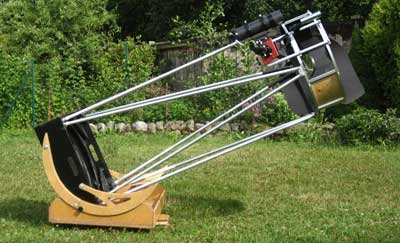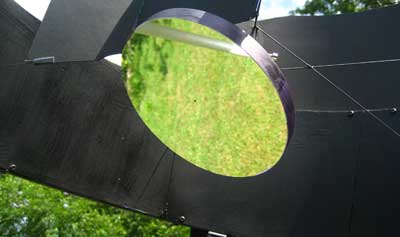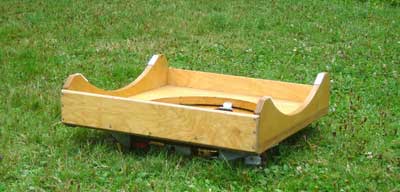22" f/4.0 lowrider
Observing with maximal aperture with your feet still on solid ground, and no need for tall ladders or stairs. This can be achieved by folding the light path stronger than in a classical Newton telescope. This is the idea behind the "Lowrider".
When I started to design the telescope, I already had some ideas about its main features: First, I wanted to make all the optics, primary and secondary mirror, by myself. Further, I wanted a telescope which should allow observing even in the zenith without a ladder or a small stair, which should be as easy to use as my 14 inch Dobsonian, and which should on the other hand have a considerably larger aperture.
Even with the Lowrider design, this can be accomplished only with a primary with a fast focal ratio. After having gone through all the different alternatives, I ended up with a 22 inch f/4 primary mirror. This would yield an eyepiece height sufficiently low to allow even the use of an equatorial platform (a must!).
















